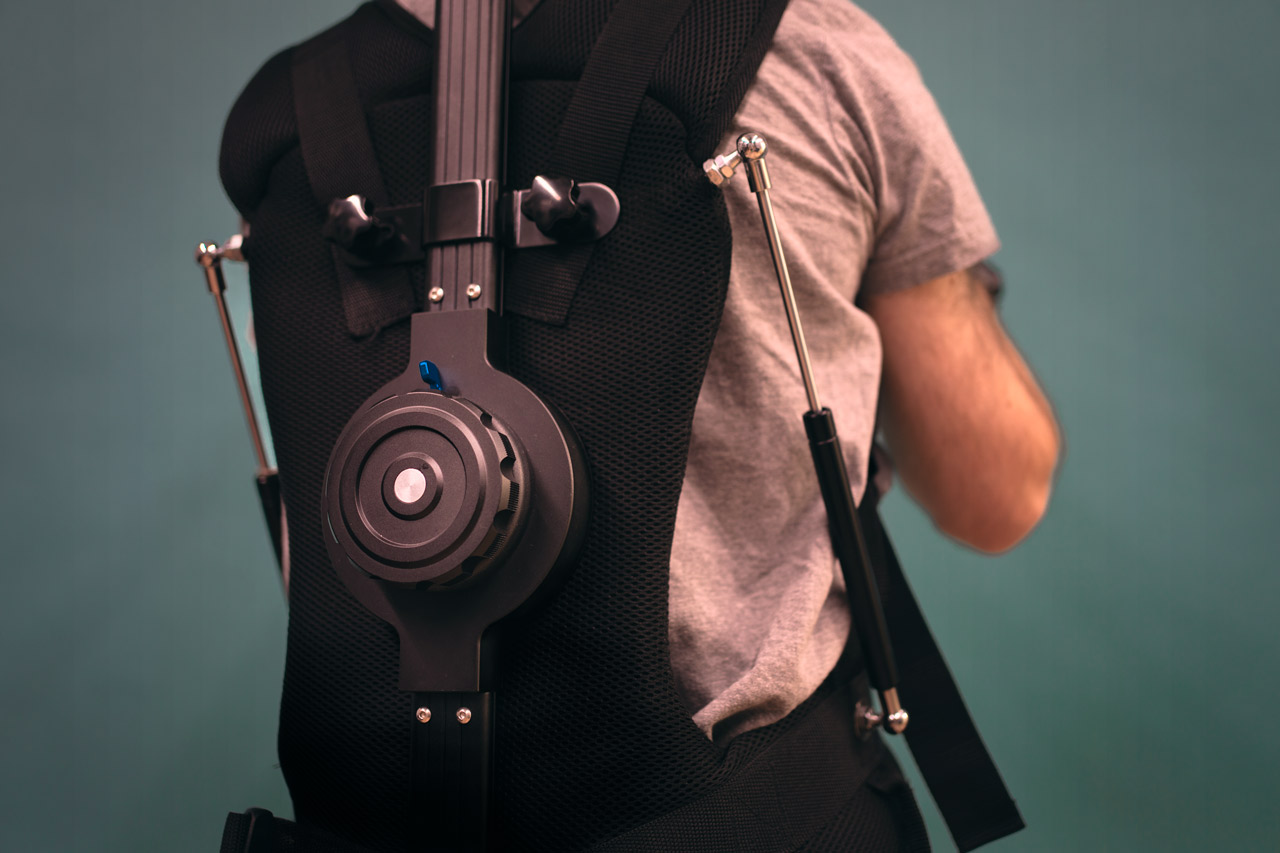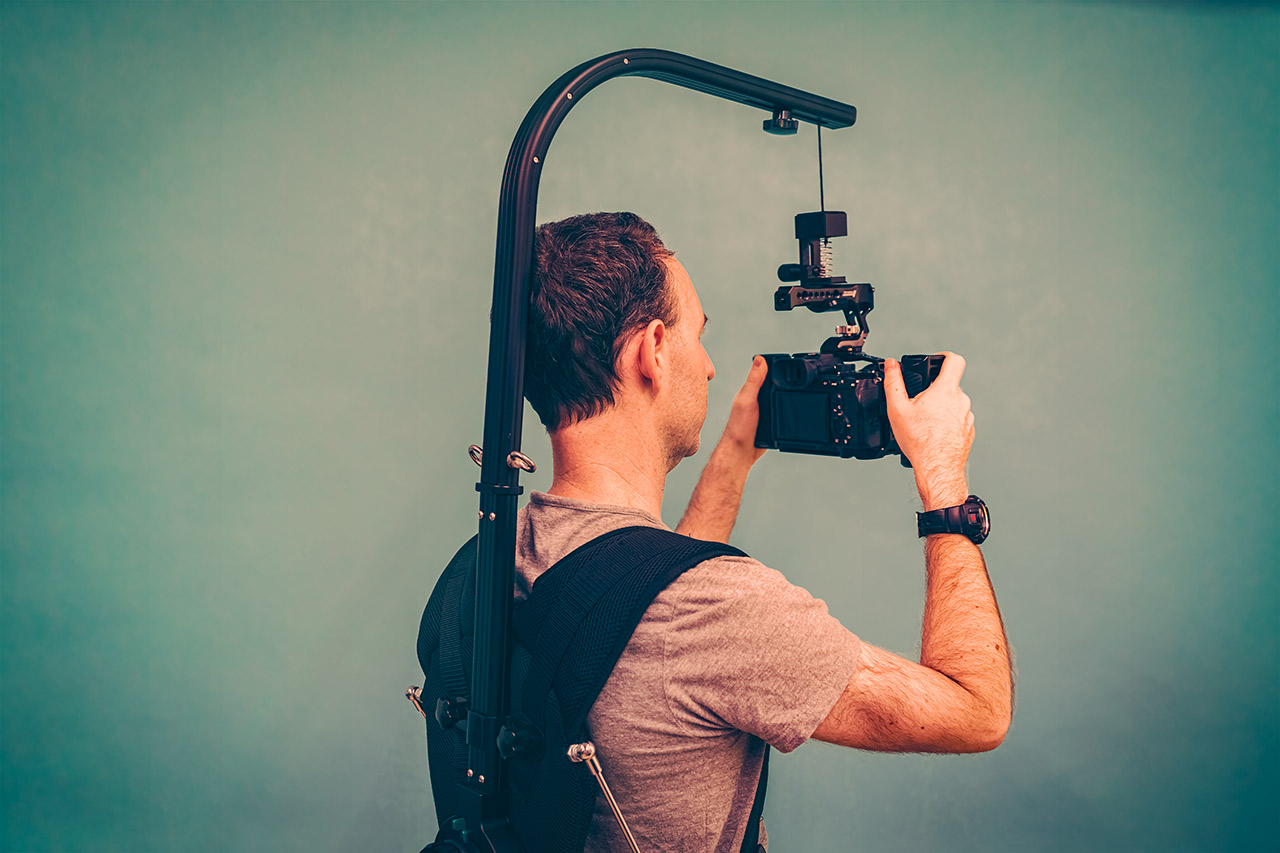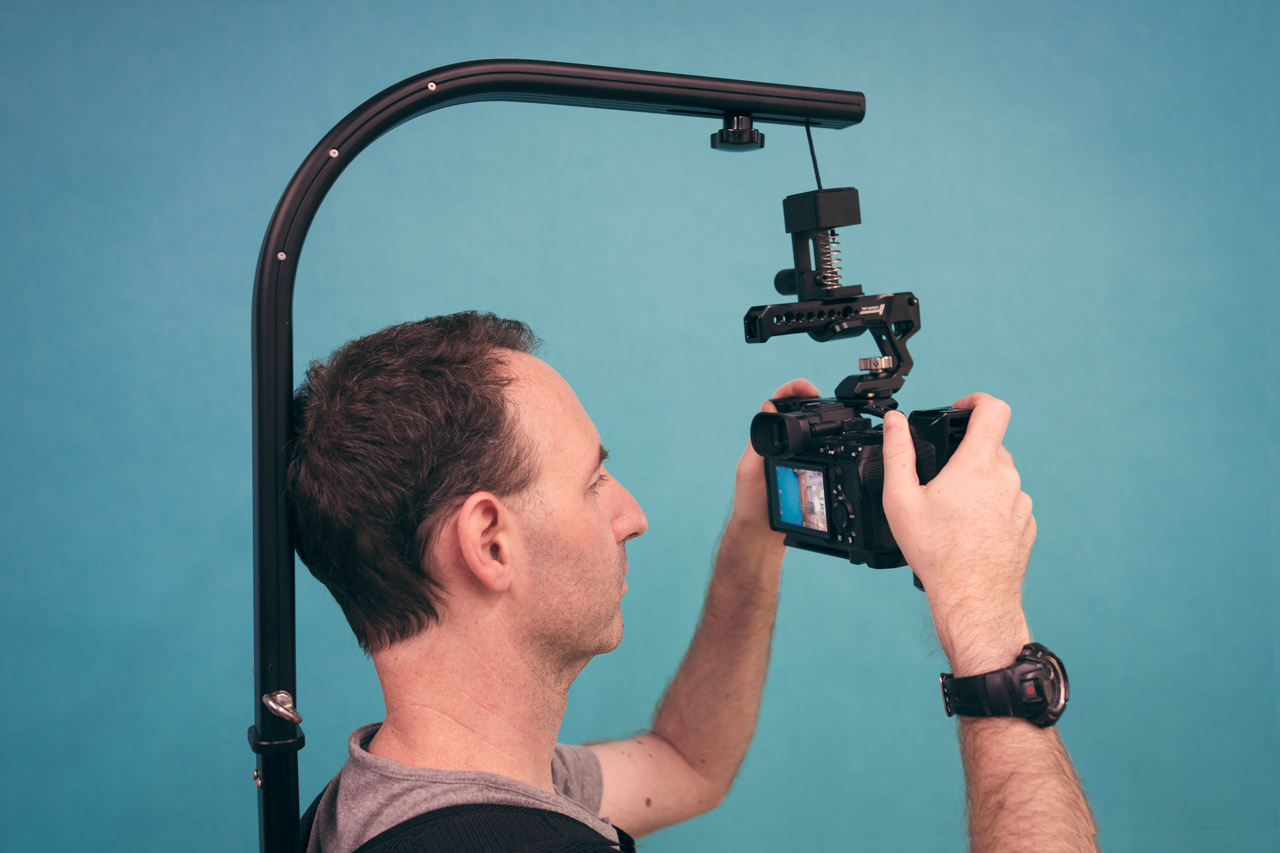Today we are taking a look at the Came-TV GS16. This vest was developed for use with larger gimbals and can also be used with other camera setups including cages (which is how it will be demoed in this review).
The CameTV support vest GS16 is essentially a harness with an overhead arm to support the weight of the camera rig. It features a central metal column that houses a spring-loaded nylon cord that runs over some pullies.
We’ve reviewed some CameTV video lights in the past. The Chinese manufacturer also offers camera support, light modifiers, batteries, and wireless audio systems.
In the box
The vest comes in a padded carrying bag. It’s disassembled for storage. In the kit, there are a couple of assembly bolts.
Construction
The vest is made of a breathable mesh fabric with nylon belts. It features padded shoulder straps and waist straps with plastic buckles. There is an extra buckle on the back for an accessory belt and a couple of handles for an assistant to guide the camera operator wearing the vest.
On the sides of the vest, there are support arms to make sure the whole setup sits upright. The overall feel of the rig is far from premium, but at the same time, the column feels sturdy and the tension cord is pretty responsive.
The back part of the vest
Assembly
To assemble the rig, attach the overhead arm to the center column and fix it in place with the provided bolts.
Setup and adjustments
On the back of the harness, there are four thumbscrews that hold the center column in place. You can adjust the height of the column by loosening these screws. Just be careful not to release them completely, because screwing them back on can be really frustrating.
There is also a thumbscrew on the overhead arm to adjust the position of the cord closer or farther away from the operator.
The big crank knob on the back of the harness adjusts the length of the supporting cord. Turn clockwise to wind it up. To release it, move the lever to the right and turn the knob counter-clockwise.
The support cord is attached to a metal hook that holds the camera rig by the top handle. The design of this hook is questionable. There is an exposed spring that can come out pretty easily if you pull on it. This whole setup is held by a metal stopper and a knot on the end of the support cord.
This setup is not meant to be used hands-free. Please don’t let your camera rig just hang off this hook, but make sure you constantly have a grip on it. Once the hook is attached to the camera rig, make sure you tighten the turn-action bolt that ensures the position of the hook on the handle.
Not going to replace a stabilizer (but can work with a larger gimbal to reduce fatigue)
In use
Even though the build quality of the CameTV support vest is pretty basic, it does the job. It’s a simple design that distributes the weight of the camera rig and takes the strain off the arms and upper back. This overhead support allows you to operate the camera continuously for long periods of time.
Of course, because of its size, there are space limitations as well. It’s not ideal if you have to move around indoors or with a lot of people around, like at an event.
Also, the concept of this harness isn’t really to stabilize your camera. You’ll still be getting handheld footage. It does even out the shots when panning, but it won’t help you if you’re walking with the camera. The waist straps will move with the hips, and the center column will rock from side to side.
Conclusion
In conclusion, the CameTV support vest is a specialty product that can be very useful for prolonged shoots. Its mechanisms are sturdy and it does the job.
Viewing distance to the camera monitor in a cage setup might be too close
Pricing
As for pricing, the CameTV support vest sells for $400.
You can check out more LensVid exclusive articles and reviews on the following link.

You can support LensVid by shopping with our affiliate partners
Affiliates: Amazon, B&H, Adorama and E-bay.
Why should you trust us?

